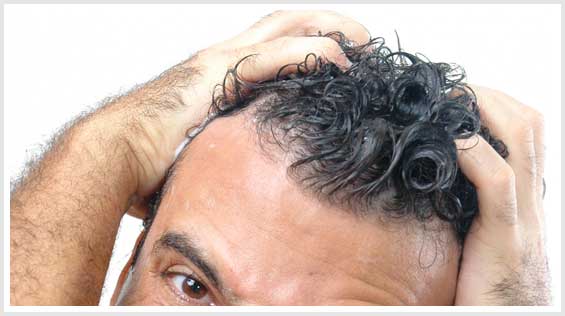THINNING HAIR NEEDS GREAT LINES TO LOOK ITS BEST, AND HAIRSTYLISTS KNOW ALL THE TRICKS FOR MAKING THE MOST OF LIMP LOCKS.
Whether your hair is naturally thin and fine or you’ve just noticed a change in your hair for any reason, you should head straight for your hairstylist and discuss your observations with a professional. He or she will know when to refer you to a doctor or a hair replacement specialist and exactly what styles maximize thinning hair; plus hairstylists will use their tricks of the trade to bring out the best in your facial features.
Bob Rider, owner of Hair Replacement Clinic in Dayton, Ohio, says, “If you’re experiencing hair thinning or loss for any reason, you may not even be aware of all the avenues available to you, which can include laser hair therapy, topical minoxidil, Propecia and hair pieces and solutions to reverse and camouflage your problem.” That said, there is much you can do through cut, color and care to minimize the effects of thinning and loss while you are treating it as well.
Cutting thinning hair
It’s a myth that fine hair needs to be cut supershort. Most stylists agree that shorter hair is stronger than longer hair. “Bring up the length to keep it as healthy as possible,” advises Ryan Thomas, owner and creative director of Ryan Thomas Hair Studio in San Diego, Calif. “A bob or a pixie style is great for thinning hair. Your stylist might use a straight razor to give your style a unique finish, because maximizing texture and movement will give the illusion of more hair.” Styles that use undercutting, where the shorter pieces underneath support the longer surface pieces, create volume naturally, and adding a few layers to a midlength cut also supports fine hair. But too many layers will cause layers to lie flat against, instead of supporting, each other. Irregular, “choppy” or notched ends including the fringe line (your bangs) visually plump up the look and help soften the long, flat look of fine hair on an oval face shape. Consider a style with a forward-moving angle at the front, and try the outward flip or the under-flip to add the look of thickness and volume. Remember: The actual lines of the cut support your fine hair — and as soon as it grows, it loses its shape and your style will fall flat. Trims must be kept up religiously.
Beware this common styling mistake: Brushing or styling fine thin hair upward to create height on short hair only lets people see how thin your hair is when the scalp shows through. Hair should come forward toward the face to accentuate facial feature.
Coloring thinning hair
Never color thinning hair at home yourself, because coloring is tricky with fine or thinning hair, as it is more susceptible to chemical breakage and damage. Only a professional hairstylist knows how the chemicals will interact, how to use color formulas correctly to expand the actual diameter of thin hair and how to give the effect of fuller hair while protecting hair from damage during the process. “Adding highlights with a lightener can swell the size of the hair shaft by up to 33 percent,” explains Thomas, “and after the chemical service and before the toner, I always use a conditioning treatment to protect hair.” Most stylists agree that adding lowlights and highlights using demipermanent and semipermanent color reduces the amount of exposure to damaging peroxide and ammonia while adding the illusion of volume. Although they do not last as long as permanent hair colors, lowlights and highlights are also much less aggressive on vulnerable hair types. When applied properly, and artistically, highlights will contrast a darker base and lowlights will add dimension so hair looks thicker but feels the same. And stylists agree on never mixing color with other processes such as perms or relaxers on fine or thinning hair types, because the probability for damage is so high.
Beware the style fade: The process needs to be repeated at specific intervals to keep the effect, just like a trim.
Caring for thinning hair
If you ask most people how they shampoo, they will say, “I rub shampoo all over my head and down to the ends of my hair.” Same for conditioner. But rubbing vigorously damages the hairs’ outer layer, or cuticle, leading to dullness and breakage and distributing harsh detergents down to the ends, unnecessarily stripping hair strands of the natural oils they need for protection. Shampoo belongs at the scalp to clean away dirt, bacteria, oil and sebum. Your scalp does not need the conditioner, either, where it only serves to attract dirt and to plug pores. Conditioner is meant for ends, distributed gently with palms of hands or a comb.
Beware rough handling: Shampoo and condition properly and gently and your thinning hair will respond better to anything else you’re doing.
